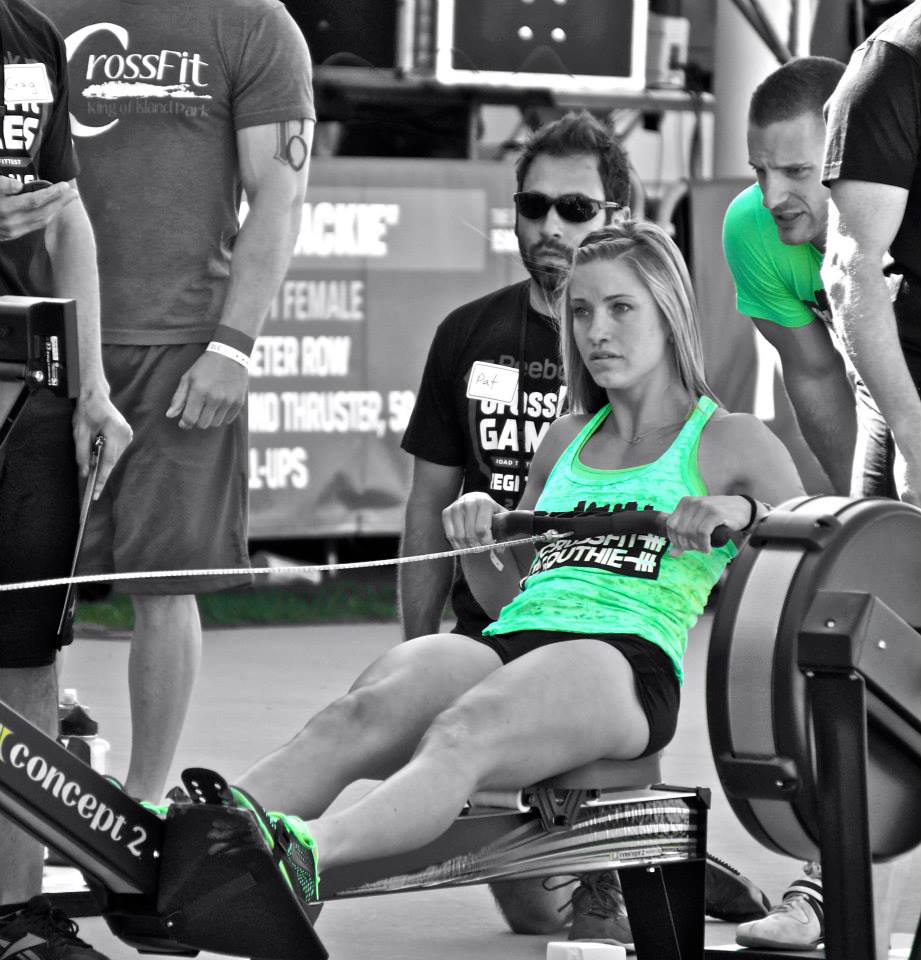
When I was in grad school for Clinical Execise Physiology I used to print out CrossFit articles and put them in my binder. I would read them during class because what they were teaching us was repetitive and outdated. What they had to offer in the exercise physiology category of the CrossFit Journal I found fascinating. I would learn more from reading one article then I would in a whole semester. I pulled the excerpt from an article written by Lon Kilgore, PhD. I know exercise physiology might be foreign to some or most of you, but Lon discusses why interval training is more effective in building cardiovascular endurance than long slow distance training.
“It is the uptake and utilization of oxygen at the muscle that is the driving force of VO2max gain. And guess what? It really doesn’t involve a great deal of cardiovascular adaptation. Rather, the adaptation must, by physiological necessity, be at and in the muscle. Changes in metabolic enzyme concentrations, membrane glucose transporters, myoglobin concentrations, and other phenomena localized to the working muscle enable more efficient extraction of oxygen from the blood and utilization in the cell. All these enable the muscle to consume more oxygen. Remember that VO2 max, the absolute marker of aerobic fitness, has the centerpiece of its definition ‘ability to consume oxygen.’ It is not defined by the ability of the heart, lungs, and vasculature to deliver oxygen.
Here lies my heresy. Consumption does not relate strongly to delivery. To state that to develop VO2max one does not need to significantly develop the heart and lungs through traditional aerobic training is not intuitive. So let’s clarify with one important piece of data to make sure this is correctly understood. When the body is at rest, only a small amount of available oxygen in the blood is extracted for use at the cell. The remainder of hemoglobin-bound oxygen stays associated with the red blood cells even after it has been exposed to the muscle at the capillary. Blood oxygen saturation is routinely 98% or better at rest. With long-slow- distance exercise, blood oxygen saturations are not significantly different from those at rest. It is rare to have a significant reduction in saturation with this type of training. Further, it has been proposed that the only way to induce a significant desaturation with long-slow- distance training is to do it at altitude (where there’s less oxygen present to start with).
Here’s the rub though. In a previously untrained individual, long-slow-distance training induces enough of an oxygen homeostatic disruption to drive improvement in VO2max for a short time. Statistically insignificant drops in blood oxygen saturation are an adequate adaptive stimulus in the beginner. But once the trainee has been training consistently for 3 to 9 months, long- slow-distance is no longer sufficiently specific a stress to drive oxygen-handling adaptation. A beginner is adapted to no work, so any type of work above sedentary life will drive a spectrum of fitness-related changes in structure and in function. Intermediate, advanced, and elite trainees cannot benefit similarly from such a non- specific training stress. In the intermediate trainee and beyond, it is the depression of oxygen saturation as a result of interval training that forces the muscle to adapt to improve its ability to extract and consume oxygen to power exercise. Oxygen saturation is a marker of the specific driving force of VO2max gain. If a beginner does long-slow-distance work and blood oxygen saturations drop 1% or less to 97%, this is enough to drive adaptation. But intermediate, advanced, and elite trainees need more. They need a drop in oxygen saturation to as low as 91%, maybe even lower for an elite athlete.”
In summary, if you want to become faster and up your conditioning then interval training will get you there. If you are working towards a summer triathlon or another endurance race then this type of interval training can and will make a good runner an even better one. When you are out there today EARN YOUR REST.
Skill
Rowing Technique
Double Under Technique
WOD (45 min)
3 Rounds
Row 500m
Run 400m
Rest 2 minutes
Row 250m
50 Double Unders
Rest 2 minutes
Level 2- 25 Double Unders
Level 1- 2 Rounds/15 Double Under attempts.
